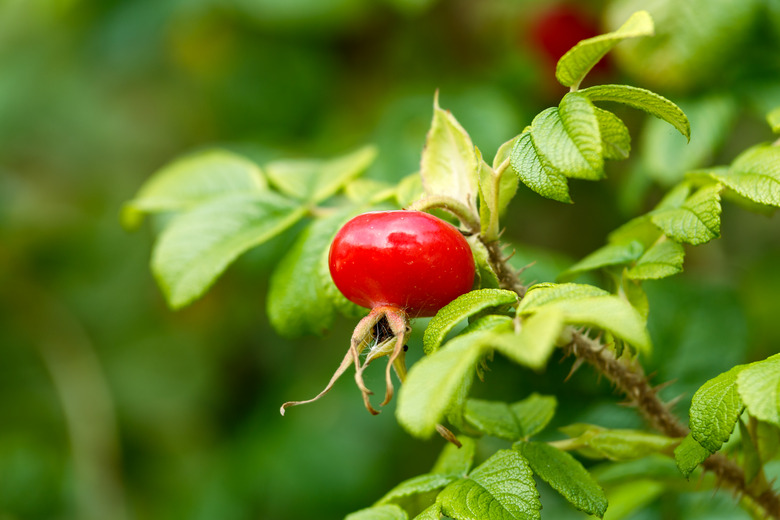How To Prune Rose Hips
We may receive a commission on purchases made from links.
It's a common practice for gardeners to "deadhead," or remove spent blossoms, from their flower beds. That often includes roses (Rosa spp.), unless leaving the spent blossoms on plants is desirable to harvest the rose hips that follow. Many gardeners may consider a bountiful harvest of rose hips to be a worthwhile goal in its own right.
Reasons to Deadhead Roses
Reasons to Deadhead Roses
The important thing to remember about flowers is that they serve a reproductive purpose. Once a plant has blossomed successfully, been pollinated and fertilized, and produced seeds, its life's work is literally accomplished (at least for this season, in the case of perennials). Annuals will often, though not always, stop blossoming or even begin to die at this stage. Perennials will begin to produce fruit or store energy for overwintering. Deadheading slows these processes and encourages the plant to continue blossoming.
This holds true for roses as well. Rose hips are the plant's fruit, and producing them is resource-intensive. Roses are already heavy feeders, so removing the hips as they form — or better yet, the spent blossoms — frees up the cane's energies to produce more blossoms. Removing the decaying blossoms is also a good preventative measure against many diseases and pests that might otherwise incubate there and spread to the rest of your plant.
How to Prune Rose Hips
How to Prune Rose Hips
Removing rose hips, or the spent blossoms before they mature into rose hips, is straightforward. Use a small, sharp pair of bypass pruning shears, sturdy household scissors or even a small knife to snip through the stem below the rose. Your shears or knife should be sanitized before making each cut by wiping them with rubbing alcohol to reduce the risk of transmitting disease from one plant to another.
For hardy, well-established roses, especially modern hybrids of the floribunda or multiflora type, you'll get a better display if you cut back a bit farther. Identify a five- or seven-leaflet leaf with an outward-facing bud and snip just above it. Don't do this with young or struggling roses, because they'll need those extra leaves to photosynthesize and feed themselves.
Not Pruning Rose Hips
Not Pruning Rose Hips
There are a number of reasons not to remove rose hips from your plants. One is that you're becoming a serious hobbyist and want to try hybridizing your own roses. You can't do that by taking cuttings, therefore, you'll need to harvest and grow out seeds from your current varieties so you can cross-pollinate them. Another reason is aesthetics; for many roses, especially Rosa rugosa (USDA zones 2-7) and other bushy types, the display of boldly colored rose hips is part of their all-season appeal.
The most compelling reason of all not to prune rose hips is that they are a valuable source of nutrition for both humans and wildlife. Like apples, pears and quinces — their close cousins — rose hips are a fruit with high levels of fiber and vitamin C, and they've been harvested for thousands of years for their value as food and medicine. They can be steeped for tea, cooked for jams and jellies, eaten fresh or seeded and dried as a snack food. They're also a food source for many kinds of wildlife and contribute to the biodiversity in your backyard.
To discourage disease while retaining your rose hips, visit your plants regularly and simply hand-remove the shriveling blossoms while leaving the infant fruit in place.
